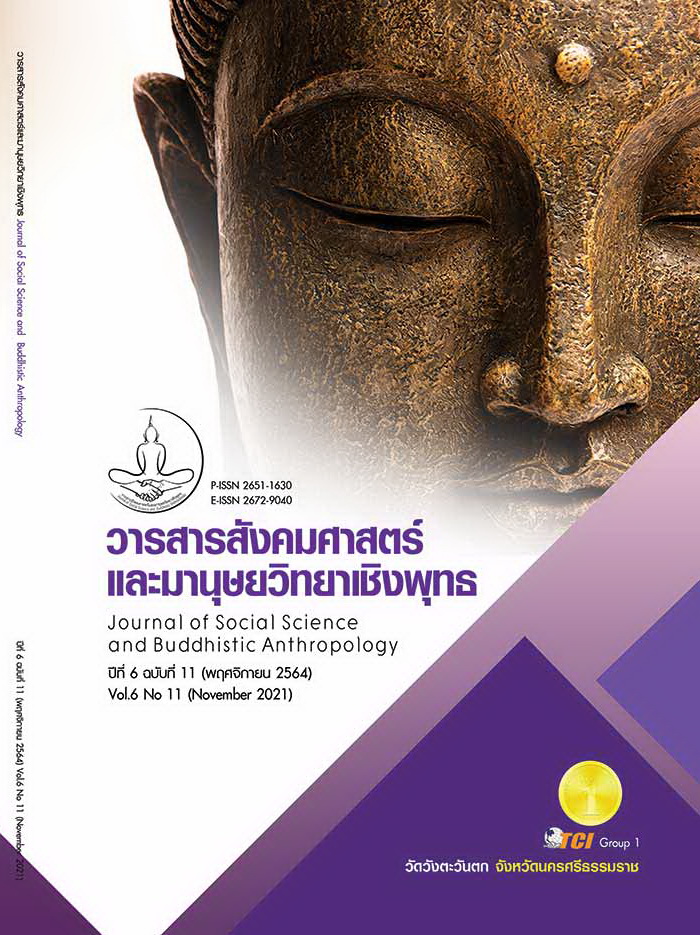THE DEVELOPMENT OF THE MATHEMATICAL LITERACY COMPONENTS AND INDICATORS FOR PRIMARY SCHOOL STUDENTS
Keywords:
Components and Indicators, Mathematical Literacy, Primary School StudentsAbstract
The Objectives of this research article were to: develop the components and mathematical literacy indicators for primary school students. The sample in this study consisted of 6 Mathematical specialists and 3 experts who had experiences in indicator development. The instruments which were used in this study included an evaluation form for the appropriateness of the components and Mathematical literacy indicators for primary students. The development of the mathematical literacy characteristics indicators had six steps: 1) to study basic information; 2) to establish the components, and indicators; 3) to create the appropriateness evaluation form ; 4) to let the experts evaluate the appropriateness 5) to scrutiny the appropriateness 6) to analyze the data and revise the study from the suggestion. The results have revealed that: the components and mathematical literacy indicators for primary school students consisted of three main components, ten subcomponents and ten indicators, as follows: 1) the mathematical contents involved two subcomponents and two indicators; 2) mathematical skills and processes have four subcomponents, four indicators, and 3) the situation/context had four subcomponents and four indicators. The results of the appropriateness of the components and mathematical literacy indicators found that both components and indicators were the most appropriate and the mean was between 4.00 – 4.89 and standard deviation was between 0.33 – 1.32 which implied that components and mathematical literacy indicators for primary students were appropriate according to the specialists’ perspectives.
References
นงลักษณ์ วิรัชชัย และคณะ. (2550). การวิจัยและพัฒนาตัวบ่งชี้คุณธรรมจริยธรรม. กรุงเทพมหานคร: บริษัท พริกหวานกราฟฟิค จำกัด.
บุญชม ศรีสะอาด. (2545). การวิจัยเบื้องต้น. กรุงเทพมหานคร: สุวีริยาสาส์น.
สถาบันส่งเสริมการสอนวิทยาศาสตร์และเทคโนโลยี. (2559). สรุปผลการประเมิน PISA 2015 วิทยาศาสตร์ การอ่าน และคณิตศาสตร์. เรียกใช้เมื่อ 10 มกราคม 2562 จาก https://pisathailand.ipst.ac.th/pisa2015summaryreport/
สถาบันส่งเสริมการสอนวิทยาศาสตร์และเทคโนโลยี. (2560). คู่มือการใช้หลักสูตรกลุ่มสาระการเรียนรู้คณิตศาสตร์ (ฉบับปรับปรุง พ.ศ. 2560) ตามหลักสูตรแกนกลางการศึกษาขั้นพื้นฐาน พุทธศักราช 2551 ระดับประถมศึกษา. กรุงเทพมหานคร: ห้างหุ้นส่วนจำกัด อรุณการพิมพ์.
สำนักคณะกรรมการการศึกษาขั้นพื้นฐาน กระทรวงศึกษาธิการ. (2560). ตัวชี้วัดและสาระการเรียนรู้แกนกลางกลุ่มสาระการเรียนรู้คณิตศาสตร์ (ฉบับปรับปรุง พ.ศ. 2560) ตามหลักสูตรแกนกลางการศึกษาขั้นพื้นฐาน พุทธศักราช 2551. กรุงเทพมหานคร:โรงพิมพ์ชุมนุมสหกรณ์การเกษตรแห่งประเทศไทย จำกัด.
สำนักงานปฏิรูปการศึกษา. (2545). รายงานการวิจัย เรื่อง การพัฒนาตัวบ่งชี้สำหรับการประเมินคุณภาพการบริหารและจัดการเขตพื้นที่การศึกษา. กรุงเทพมหานคร: บริษัท สำนักพิมพ์ธารอักษร จำกัด.
Ippolito, J. et al. (2017). What Literacy Means in Math Class: Teacher Team Explores Ways to Remake Instruction to Develop Students'Skills. Retrieved May 17, 2019, from https://learningforward.org/wp-content/uploads/2017 /08/what-literacy-means-in-math-class.pdf
OECD. (2015). PISA 2015 Assessment and Analytical Framework Science, Reading, Mathematic, Financial Literacy and Collaborative Problem Solving. Retrieved May 17, 2019, from https://www.oecd.org/education/education -at-a-glance-2015.htm
Stacey, K. (2012). THE INTERNATIONAL ASSESSMENT OF MATHEMATICAL LITERACY: PISA 2012 FRAMEWORK AND ITEMS. Retrieved July 20, 2019, from https://www.mathunion.org/fileadmin/ICMI/Conferences/ICME/ ICME12/ www.icme12.org/upload/submission/2001_F.pdf
Zulkardi, Z. & Kohar, A. W. (2018). Designing PISA-Like Mathematics Tasks In Indonesia: Experiences and Challenges. Retrieved July 20, 2019, from https://iopscience.iop.org/article/10.1088/1742-6596/947/1/012015








